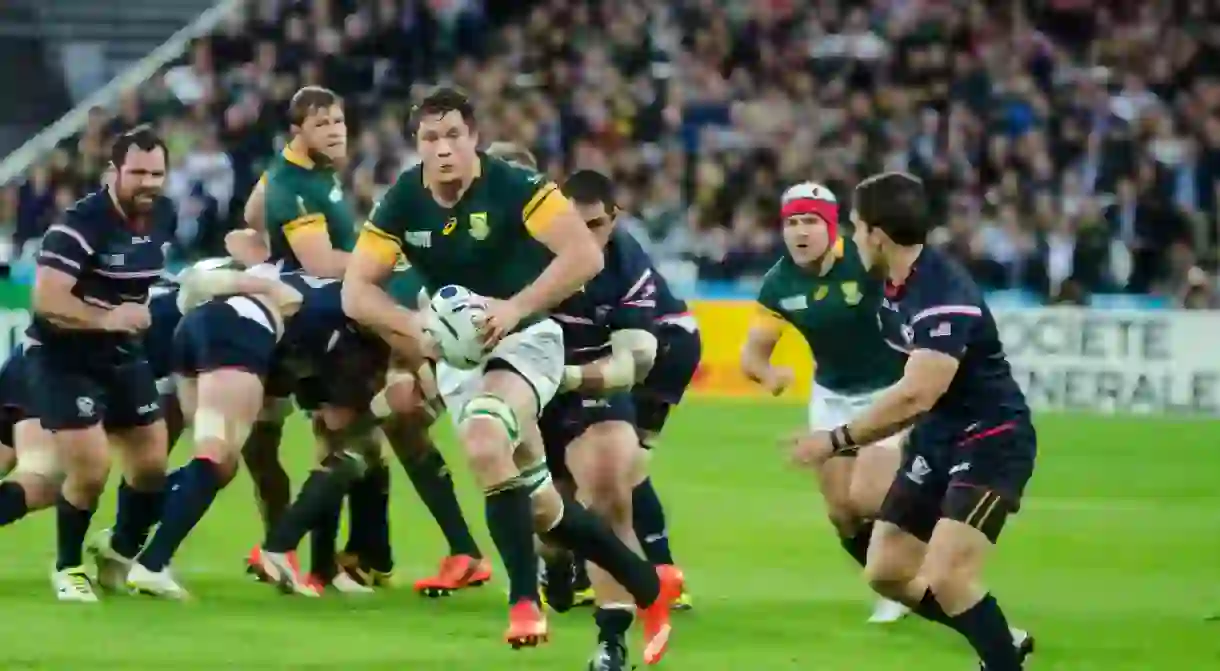Athletes who Play These Sports Die Youngest

While competing in sport is a fantastic way of staying healthy and fit, there are a number of sports that take their toll physically on those who participate, and some are far more dangerous than others.
There are sports that are simply so dangerous that the death toll is far greater than most other sports. They contribute to high death rates, and as a result, athletes losing their lives at a young age. Certainly, extreme sports fall into this category, with the likes of BASE jumping, hang gliding and big wave surfing leading to s significant number of deaths. According to research published by the National Centre for Health Statistics on the causes of deaths in the United States, one in 560 people attempting hang gliding die, while BASE jumping was as high as one in 60.
Motor sport, and in particular Formula 1, has drastically improved its safety record and, as a result, the number of deaths of professional drivers involved has dropped significantly since the tragic death of Ayrton Senna in 1994. Since then, Jules Bianchi’s death at the Japanese Grand Prix in 2015 has been the only death during a Formula 1 race weekend. His death has been the only death in the last 24 years, compared to 12 deaths in the 24 years prior to that. In total, 51 Formula 1 drivers have lost their lives while competing, and that is just in competition, that doesn’t include those occurring through testing and practice sessions.
The Isle of Man TT, probably the world’s most famous, and dangerous, motorbike race has been responsible for a huge amount of fatalities. Bikes race at up to 200mph through a street course, which is incredibly exciting for drivers and spectators alike, but since the race’s inception in 1907, 252 people have been killed.
While athletes competing in the likes of BASE jumping or motorsport have to be incredibly fit to participate in such sports, getting through a jump or a race successfully and safely means relatively little damage done to their health or safety. There is of course a physical toll, but landing a BASE jump properly shouldn’t hurt the person doing it. This is at odds with physically brutal sports, such as rugby, American football or boxing.
Just through the sheer workload of 80 minutes of Test rugby, or 12 rounds of boxing, getting through to the end with a win doesn’t factor in the absolute battering the body can take. Bruises, cuts, sprains, breaks and worse happen regularly, but that doesn’t take into account the longer term affects that may not be immediately apparent.
Recorded brain injuries are becoming more frequent down to the instances of concussion that happen during competition. In the 2013/14 season there was a 59% increase in reported concussions in the Aviva Premiership (England’s premier domestic rugby competition), compared to the season before. It’s worth noting that this is an increase in the reports, and doesn’t factor in the amount of unreported cases. The league’s efforts to increase precaution and its safety practices will have undoubtedly contributed to the rise.
There are also sports that have seen deaths to athletes occur through doping. Cycling has seen a number of suspicious deaths, often difficult to attribute to doping specifically. While doping has exisited in one form or another for nearly as long as professional cycling itself, the example of EPO (Erythropoietin) is a notable indicator. What is known is that professional cyclists started using EPO around 1987. In three years between then and 1990, 2o young cyclists from Belgium and The Netherlands died. Johannes Draaijer was one of those cyclists, and his widow publicly proclaimed that she hoped it would serve as a warning to potential dopers in the sport.
There was also another collection of deaths in 2003-04 when eight cyclists, all younger than 35, died. Among those deaths, the 13 month span saw two of them die in their sleep and one while on the track. The youngest of the eight was only 16.
In some instances, simply the fact that the athletes are fitter than average can be enough to increase the chances of serious health issues affecting their lives. Football has seen a number of deaths as a result of hypertrophic cardiomyopathy (HCM). The condition essentially effects athletes that would ordinarily be considered super fit. HCM leads to a thickening of the heart muscle, leading to greater stamina and physical performance, but in some cases an abnormality can occur in which the heart continues to grow, and, as a result, leads to restricting blood flow to and from the heart.
This is what happened to the likes of footballers Marc-Vivien Foé, Miklós Fehér and Cheick Tioté, as well as Fabrice Muamba, who incredibly survived when he collapsed in a Premier League game at White Hart Lane, mainly thanks to the swift work by a heart surgeon who happened to be in the crowd. Similar deaths have occurred in basketball, American football and Aussie rules football.
These are, thankfully, anomalies. Participating in sport, elite or otherwise, generally contributes to greater health, and a longer lifespan. That said, a variety of contributing factors can lead to early deaths in professional sport, some more obvious than others.













